Cleaning your pistol starts before the solvent ever hits the surface. One step people tend to skip is removing the old oil that’s been sitting on the parts. It might not seem like a big deal, but if that stuff’s left behind, it can mess with how well your cleaning job actually works. Old oil doesn’t just lie there — it mixes with grime and carbon buildup and makes it harder for the new solvent to do its job.
Think of it this way: trying to clean over old oil is like painting over peeling paint. You’ll still end up with a mess underneath. A fresh surface allows your cleaning solvent to work better and keeps your firearm operating smoothly. Making this step part of your regular upkeep helps extend the lifespan of the pistol and supports how it performs over time.
Why You Need To Remove Old Oil
Old oil builds up over time and stops being helpful. When it’s fresh, oil shields the metal and keeps everything working like it should. After use, though, that same oil attracts dust and grit from shooting. Once that grime sticks, the oil turns tacky and starts clogging up friction points. That stickiness reduces precision, slows moving parts, and increases wear during use.
Even worse, if you skip removing that oily layer before applying your solvent, you're basically sealing contaminants into the surfaces you're trying to clean. That means you’re scrubbing more and getting less done. It can also make it harder for your solvent to lift out carbon buildup effectively.
Here’s what can happen when old oil isn’t fully cleared:
- Gumming: Old oil thickens and forms sticky patches that slow down slides and triggers
- Trapping carbon: Debris and carbon cling to the residue, making later cleaning harder
- Rust risk: Dirty oil can actually cause surface issues rather than preventing them
- Poor lubrication: New oil won’t apply evenly if old oil is still there
- Interference with solvent: Layers of old oil make it harder for solvent to reach the metal
Taking the time to clean off that layer first doesn’t just improve cleaning — it gives you a more accurate idea of the pistol’s condition and prevents long-term issues.
Tools And Materials Required
Before you start removing oil, it helps to know exactly what tools and materials you’ll need. Trying to wing this part usually ends in frustration or missed spots. Having the right stuff at your side from the beginning makes the job smoother and keeps your firearm in better shape throughout the process.
Here’s a list of what you’ll want on hand:
1. A quality solvent for cleaning a pistol – Make sure it’s made for firearms, not a general-purpose degreaser. Look for one that’s odorless, non-corrosive, and designed for carbon buildup and oil removal.
2. Soft cleaning rags – Microfiber or cotton cloths work great. They pick up and trap residue without scratching.
3. Cleaning brushes – Nylon brushes help loosen oil and carbon without damaging surfaces. Use different sizes to get into tight spaces.
4. Pistol cleaning picks – These help with tight corners where brushes and rags can’t reach.
5. Gloves – You don’t want solvent or grime on your hands. Disposable nitrile gloves work well.
6. Safety glasses – If the solvent squirts or drips, you’ll want good eye protection.
Each of these plays a part in making sure the surface is cleared of old oil without leaving any traces behind. Other gear like a bore light or magnetic parts tray can help keep things tidy, but the basics listed above are enough to get the job done. Once you're stocked up, you're ready to begin clearing the surface and prepping for a deep, full clean.
Step-by-Step Guide to Removing Old Oil
Starting with a clean work surface makes this process easier. Lay down a protective mat to catch any drips or small parts. First, ensure your pistol is safely unloaded. Double-check by visually and physically inspecting both the chamber and the magazine well. Disassembling the firearm is often necessary to reach all areas effectively, so refer to your owner's manual for specific instructions tailored to your model.
Begin by applying the solvent to a cleaning rag or brush. Don’t pour or spray it directly onto the firearm. You want just enough to lightly dampen the cloth or brush. Gently swab all the parts, focusing on areas where grime and oil tend to collect. Use a brush to loosen residue from small spaces like slide rails or the firing pin channel. Scrub with consistent pressure so you don’t miss areas.
If there are spots that still feel sticky or look dirty, let the solvent sit a bit longer to break down the old oil before wiping it off. A cleaning pick can help clear gunk out of tight spaces and crevices. As you go through each part, take your time and work methodically so nothing is overlooked.
Continue checking your cloth or brush to see what you’re picking up. This feedback helps you decide when a part is completely clean or needs another round. It's better to go slow and get it right than to rush and leave behind residue that could mess with performance later.
Preparing for the Subsequent Cleaning
Once the old oil is gone, you’re almost ready to move forward with a full cleaning session. But first, everything needs to be dry. Leftover solvent, even if it's safe for firearms, can affect how new oil or lubricant bonds to the metal. Take a dry cloth and go over every surface carefully. Make sure you spot any areas that are still damp.
Some people use a small fan to speed up the process. Just make sure it’s clean and that you’re not blowing dust or debris onto freshly cleaned parts. Inspect each component after drying to check for any missed spots or buildup. This is a good moment to look for wear, scratches, or other signs that something needs attention or might need replacement soon.
Having everything clean and dry before reapplying oil or starting the detailed cleaning lets you get the best results from the next steps. Using a reliable solvent for cleaning a pistol helps ensure that there’s no film or residue left behind, so new lubricants go on smoothly and do their job right.
Keeping Your Firearm Pristine With VULCAN Arms
Taking care of a firearm means committing to every step of the process, not just the obvious ones. Removing old oil before cleaning might seem small or easy to skip, but it plays a big part in how well your pistol performs over time. It sets you up for deeper cleaning and helps everything from your slide to your trigger keep running smoothly.
At VULCAN Arms, we know how much pride our customers take in their firearms. That’s why we offer high-quality cleaning products built specifically for real-world maintenance. From dependable solvents to cleaning tools that handle the hard spots, our gear helps prepare your pistol to function safely and reliably whenever you need it.
Routine upkeep isn’t just maintenance. It’s about protecting your investment and ensuring your firearm is ready every single time. Keeping old oil off your pistol gives you a strong foundation for every next step that follows in your cleaning kit routine. When you're thorough from the beginning, you get better results every time.
Keeping your firearm clean doesn't have to be a hassle. At VULCAN Arms, you’ll find everything you need for a faster, easier clean. Try a high-performance solvent for cleaning a pistol that helps cut through carbon build-up and keeps your pistol functioning reliably, shot after shot.




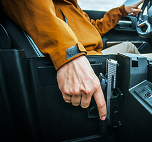
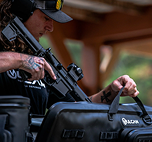
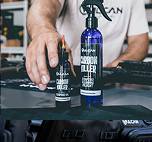
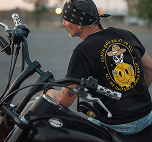
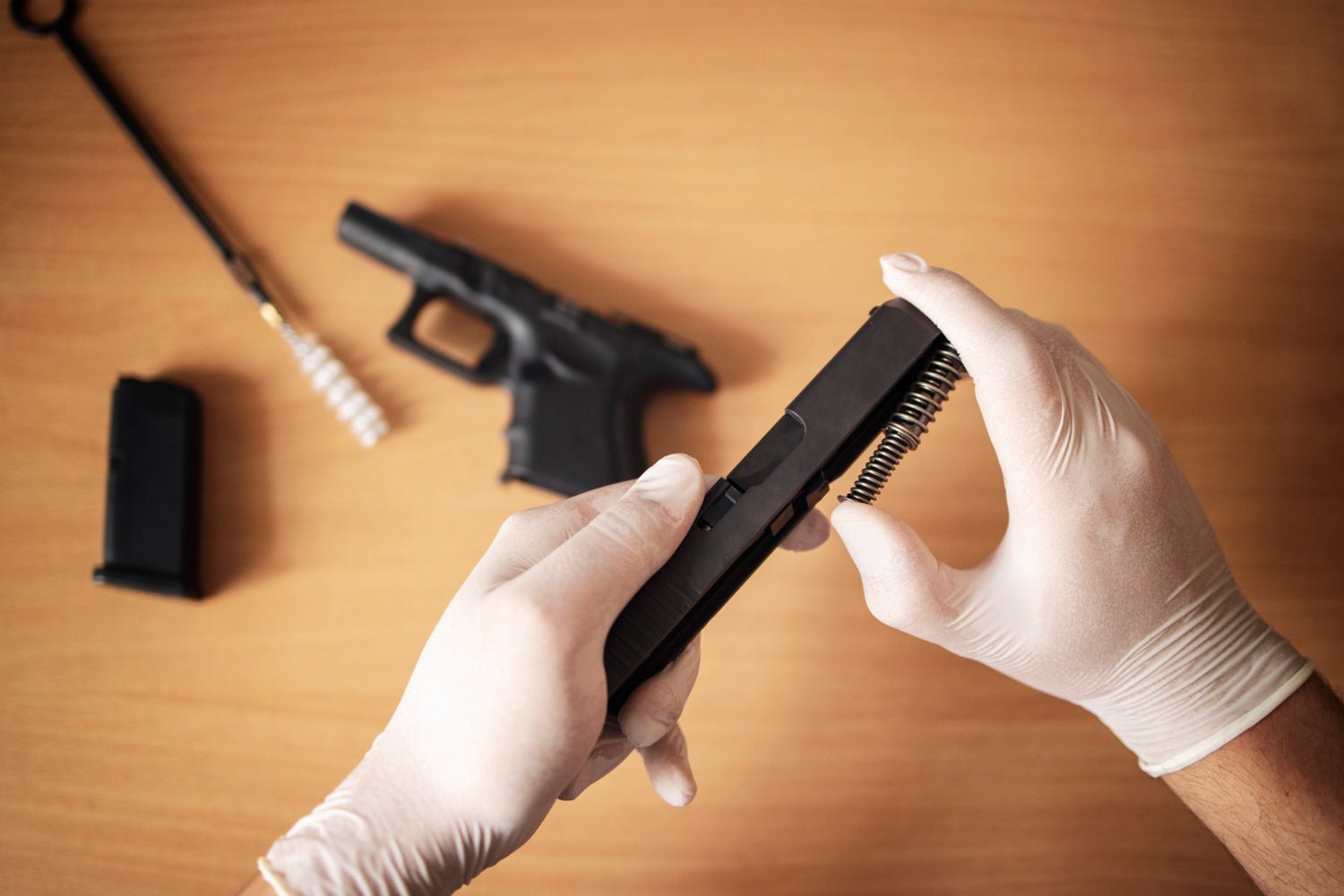
Share:
Maintaining Quick-Draw Holster Springs
Reinforcing Vehicle Holster Mounts